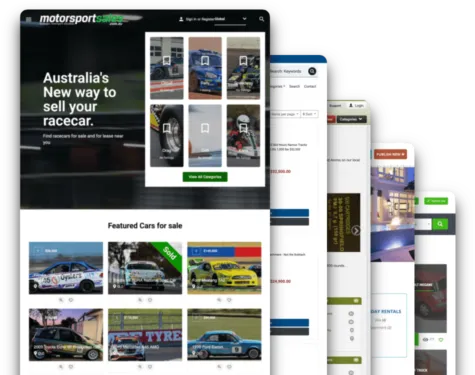The digital landscape is brimming with classified marketplace websites, making it essential to stand out.
A user-friendly design isn’t just a luxury—it’s the key to success.

From intuitive navigation to accessibility, every detail matters.
This article explores how to create a classified marketplace that users love.
Why User-Friendly Design Matters in Marketplaces
A well-designed website determines user retention and transaction rates. According to HubSpot, 88% of visitors won’t return after a bad user experience.
Key Benefits of User-Friendly Design
- Higher Conversion Rates: Simple layouts encourage users to act.
- Reduced Bounce Rates: Easy navigation keeps users engaged.
- Stronger Brand Loyalty: Positive experiences build trust and repeat visits.
Challenges
- Overcrowded Interfaces: Complicated designs overwhelm users.
- Slow Loading Times: Websites taking over 3 seconds to load lose 40% of visitors.
- Mobile Optimization: Nearly 54% of traffic is mobile-based but poorly optimized.
Solutions
- Focus on minimalist design principles.
- Invest in speed optimization tools like caching.
- Prioritize responsive design for mobile users.
![]()
Core Features of a User-Friendly Classified Marketplace
1. Intuitive Navigation
Users should find items with minimal effort.
Tips for Better Navigation:
- Breadcrumbs: Guide users back easily.
- Categorization: Use clear, logical groups like “Vehicles,” “Real Estate,” or “Jobs.”
- Search Functionality: Include filters for price, location, and product type.
2. Seamless User Registration and Login
Simplify how users access your platform.
Features to Include:
- Single Sign-On (SSO) via Google, Facebook, or Apple.
- Two-factor authentication (2FA) for security.
- Guest browsing options to reduce barriers.
3. Mobile Optimization
With Statista reporting mobile devices account for over 50% of global web traffic, responsive design isn’t optional.
Best Practices:
- Optimize images for faster load times.
- Use large, tappable buttons.
- Ensure text readability across devices.
4. Clear Call-to-Actions (CTAs)
Guide users toward desired actions like listing or purchasing.
Effective CTAs:
- “Post Your Ad Today!”
- “Find Your Dream Home Now!”
- “Upgrade to Premium for More Visibility!”
5. Trust Signals and Reviews
Build credibility with user reviews and secure payment options.
Trust Signals to Implement:
- Verified badges for sellers.
- HTTPS encryption for secure transactions.
- Refund policies for risk-free purchases.

Designing for Accessibility
Essential Accessibility Features:
- Screen Reader Compatibility: Use alt text for images.
- Keyboard Navigation: Allow navigation without a mouse.
- Adjustable Font Sizes: Offer scalable text for better readability.
Legal Compliance
Non-compliance with accessibility standards like WCAG could result in lawsuits, as seen with the Domino’s Pizza case.
Data-Driven Insights for Better Design
Statistics to Consider:
- 65% of users favor personalized experiences (McKinsey).
- Sites using AI-driven recommendations see a 30% boost in sales.
How to Use Data for Optimization:
- Implement heatmaps to track popular areas of the site.
- Use A/B testing to refine elements like CTAs.
- Analyze user feedback to identify pain points.
Real-Life Case Studies of Successful Marketplaces
1. Craigslist
Challenge: Simplistic, text-heavy interface with limited features.
Solution: Retained a no-frills design focusing solely on functionality.
Key Takeaway: Simplicity can be powerful if your audience values it.
2. Facebook Marketplace
Challenge: Integrating marketplace features into an existing social platform.
Solution: Leveraged user profiles and social trust to enable seamless buying/selling.
Key Takeaway: Combining convenience and trust fosters growth.
3. OLX
Challenge: Scaling a marketplace across diverse geographies.
Solution: Adapted UI to local languages and preferences while maintaining a cohesive global look.
Key Takeaway: Localization enhances user engagement.
Predicting Innovations in Classified Marketplaces
1. AI-Powered Features
- Personalized Search Results: Tailored recommendations based on behavior.
- Fraud Detection: Identifying fake ads automatically.
- Chatbots: Offering real-time support 24/7.
2. Augmented Reality (AR)
- Virtually inspect real estate listings.
- Preview furniture in their homes before purchase.
3. Blockchain for Transactions
- Payment Security: Faster, transparent transactions.
- Seller Verification: Immutable records for added trust.
Steps to Future-Proof Your Marketplace Design
- Embrace Scalability: Build infrastructure that grows with user demand.
- Focus on Personalization: Use AI to deliver tailored experiences.
- Integrate New Technologies: Stay ahead with innovations like AR and blockchain.
- Monitor Trends: Regularly adapt to changing user behaviors.
Conclusion
A user-friendly classified marketplace website is the cornerstone of success. By focusing on intuitive navigation, accessibility, and emerging technologies, you can create a platform users love.
Learn from successful marketplaces and incorporate future trends to stay competitive.
Looking to Create a Marketplace? Contact Us at Yclas Today!

